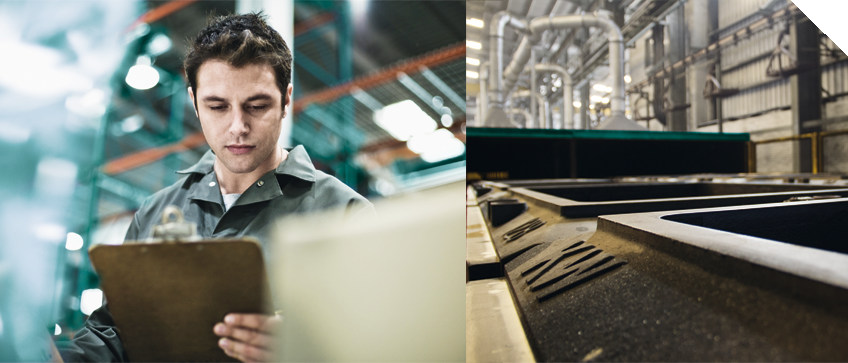Layout variations for moulding plants
Individualised solutions.
Our examples of layouts for moulding plants orient themselves in relation to potential requirements in the areas of pattern accessibility and the core-setting line.
 Convincing plant concepts and users’ positive experiences: We take pride in our knowledge of process technology and plant construction. What can we do for you?
Convincing plant concepts and users’ positive experiences: We take pride in our knowledge of process technology and plant construction. What can we do for you?
They form the basis for layout design alongside additional adaptations stemming from user-specific circumstances. These aspects are: moulding-line level (floor/below-floor), core-setting level (low/high), line arrangement (jointly/separated) and pallet support (with/without).

